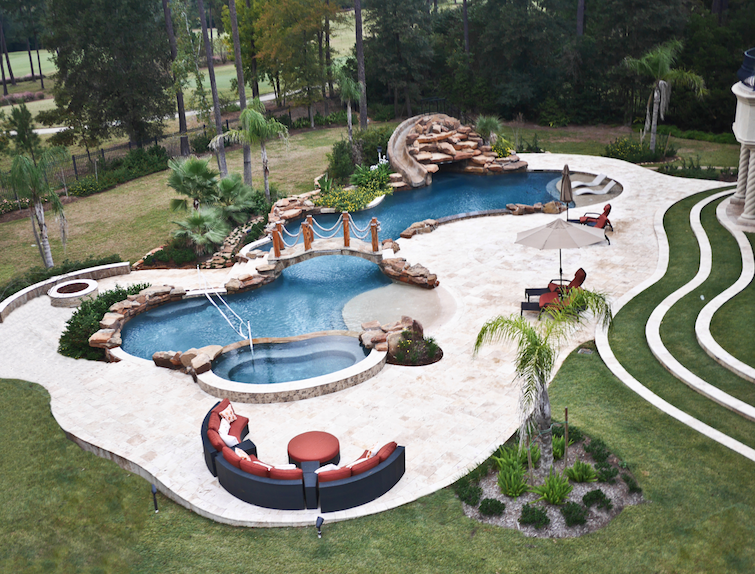How to Get Your Pool Summer Ready
June 15, 2016 at 03:28 PM

It's officially almost summer. Let's get those pools ready! Here are a few easy steps to get your pool and backyard prepared for the season.
1. Inspect and clean the deck.
Check the expansion joints for cracks or tears. Also check your deck for any damage and take care of any repairs or upgrades to address serious maintenance issues. Problems with the deck can cause shifting of the pool.
Sweep away or hose off any leaves, dirt, or other debris from the pool deck and pressure wash the area with low-pressure hoses. Fill in any cracks and re-stain if necessary.
Finally, clean your patio furniture with a mild detergent and some water and dry thoroughly.
2. Take off the pool cover, if you have one.
If you use a pool cover, get rid of leaves, dirt, branches, and whatever else has collected on top of it. Hose off the cover with high pressure, and use a mild detergent to remove any dirt stains. Dry it completely. Use a submersible pump to remove excess water.
3. Check the water level.
For proper pump function, water has to be high enough to circulate. The level should reach the middle of the skimmer so if you need to, top off your pool with clean water.
4. Test chemical levels.
If you use a home test kit, check the pH balance, chlorine and/or salt levels in your water, as well as the total dissolved solids (TDS) in the pool. Ideally, your pool's pH level should be between 7.2 and 7.6, and the chlorine level should be between 1 and 3 parts per million (ppm).
If you have a saltwater pool with a chlorine generator, consult your manual to check that salt levels are in line with its specifications. TDS levels should be between 1000 and 1500 (ppm).
For other tests, the desired calcium hardness level is 150-280 ppm, and the bromine level should be 3.0 to 5.0 ppm.
If you don't want to test your water yourself, take a water sample to a swimming pool store.
In both cases, pool professionals will then tell you what needs to be adjusted and by how much.
Having a rough idea of your pool water volume is gallons will help with chemical calculations. Here's a handy formula for determining how many gallons of water your pool holds: Length (L) x Width (W) x Average Depth x 7.5 = Number of Gallons.
5. Inspect your pump/filters.
Clean out all the baskets, drains and skimmers.
If you have a saltwater pool, remove and clean the chlorine generator cell. Use a hose to remove mineral buildup and scrub off sticky residue with a cleaning brush.
Check your equipment for water leaks by turning everything on and inspecting the ground for any wet spots or puddles.
Call your pool professional for any issues or more information.
6. Clean the water.
Vacuum your pool to remove heavy debris. If your pool water looks a little cloudy, be sure the filter is cleaned as often as needed until the water is clear and ready for swim time.
7. Clean pool surfaces and tiles.
Brush pool walls with a pool brush and clean tile bands with the cleaning products recommended for the material used in your pool.
Remove calcium deposits and hard water stains with a pumice stone used with gentle pressure. Dilute a mild detergent with water to remove residue and dirt build-up on tiles.
8. Check all safety features.
Inspect handrails, ladders, slides, and diving boards for shakiness or damage. Ensure that all fences, gates, and locks operate as they should. Assemble a pool safety kit if you haven't already and keep it in a highly visible area. Pool safety equipment might include a pool rescue hook, flotation device, and a first aid kit with a whistle.
Call your local pool professional if you have questions or need more information.
Get your pool ready now and you'll be swimming when the heat wave hits!
Photo from Regal Pool Design.